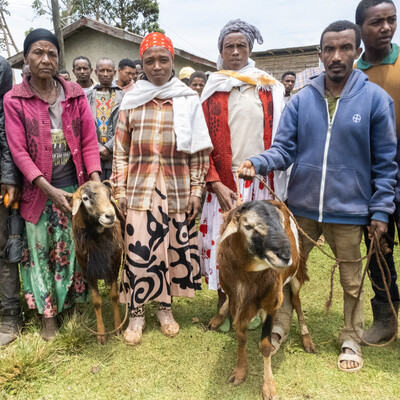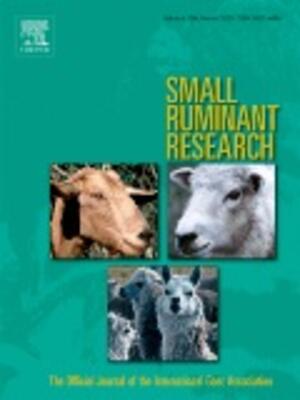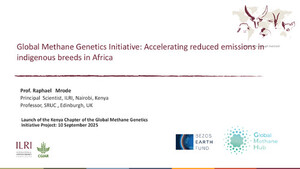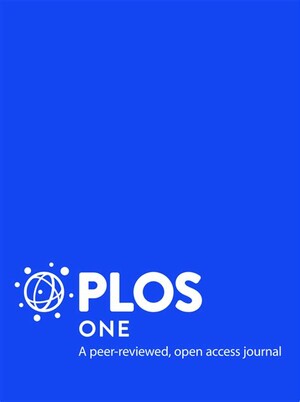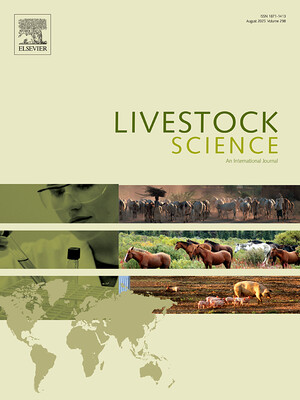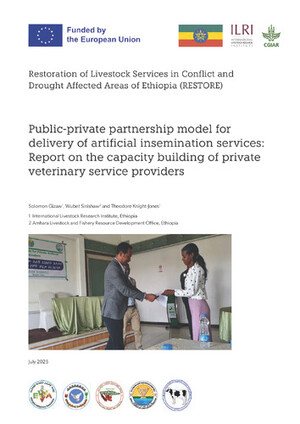
Germplasm for Dairy Development in East Africa, Phase 1: Identifying appropriate germplasm and delivery mechanisms
The 'Dairy Genetics East Africa' project (phase 1) will determine what are the most appropriate genotypes for the range of dairy production systems and levels of production operated by small-holder farmers in East Africa, and how these genotypes can be delivered to small-holders. The project partners will apply high density single nucleotide polymorphism (SNP) technology to determine breed composition of cows owned by small-holders, and combine this with traditional and participatory appraisal of animal and farm performance to determine which genotypes are most profitable at different levels of production. An assessment of the potential value of importing, testing and delivery of genotypes from elsewhere will be undertaken. A partnership will be developed that has a fully articulated business model ready to implement delivery of germplasm in a Phase II project and beyond. A design will also be developed for better delivery of research for development in livestock genetics in sub-Saharan Africa.
Project Objectives/Goals:
The long-term vision of success of the project (i.e. the combined outcomes of Phases I, II and III) is “The sustainable delivery of livestock genotypes to over one million small-holder dairy farmers in East Africa that will enhance livelihoods and minimize risk within a holistic approach to improvement of small-holder dairy systems”.
The overall objective of this Phase I project is to gather information and create partnerships and business models ready to implement in later projects (Phases II, III and other projects) that will sustainably develop and deliver appropriate genotypes to small-holder dairy farmers in East Africa and assist implementation elsewhere in the developing world. The Phase I project objective contributes to the long term vision by providing the information, partnerships and business models necessary to define the targets and methods for implementation of a sustainable system to deliver the genotypes required to achieve the vision. The operational objectives within the project are as follows:
- Objective 1: Determine the appropriate genotypes that should be delivered to, and are demanded by, small-holder dairy farmers. The primary emphasis is on the temperate and sub-tropical systems of East Africa but we will investigate the feasibility of a pilot study in East African tropical dairy systems, depending on the experiences, baseline survey results, and impact on accuracy of assessment of genotypes in the highland systems. We will also undertake an assessment of at least one existing South Asian tropical system, to determine whether the methods and results being applied here could usefully be applied elsewhere.
- Objective 2: Develop a sustainable partnership and business model that is ready to develop and deliver appropriate dairy cattle germplasm to smallholder dairy farmers of East Africa in Phase II. Within this objective the project will facilitate the new partnership to develop a proposal for Phase II of the project to be submitted to funding partners by the new partnership.
- Objective 3: Provide a White Paper on institutional frameworks that will enhance the efficiency and effectiveness of livestock genetics research for development in and for Africa.
- Objective 4: Manage project to deliver all outputs.
Expected Outputs:
The outputs of Objectives 1, 2 and 4 combine to provide the information, capacity and design that enable implementation of the vision in projects that will follow this project (Phases II, III and other projects). The output of Objective 3 outlines the issues and possible frameworks to undertake livestock genetics research and development in Sub-Saharan Africa that supports agriculture development in the region.







